Are you ready to discover the incredible versatility of Pit Bulls? Prepare to be amazed by the countless roles this breed has played throughout history.
From their origins in bull-baiting to their surprising presence as farm dogs and even nannies, Pit Bulls have proven time and time again that they are capable of so much more than their misunderstood reputation suggests.
But what exactly makes these dogs so special? In this article, we will uncover the truth behind their temperament, explore their potential as therapy dogs, and analyze their portrayal in popular culture.
Get ready to challenge your assumptions and see Pit Bulls in a whole new light.
Key Takeaways
- Pit Bulls, including breeds like American Pit Bull Terrier and American Staffordshire Terrier, have a diverse history and are not inherently aggressive.
- When adopting a Pit Bull, prioritize rescue organizations or shelters, as they often have a surplus of these dogs.
- If purchasing from a breeder, choose a reputable one that prioritizes health and temperament.
- Pit Bulls make excellent therapy dogs due to their affectionate, loyal, and intelligent nature. They have been used to provide comfort and emotional support to children with disabilities.
History and Characteristics
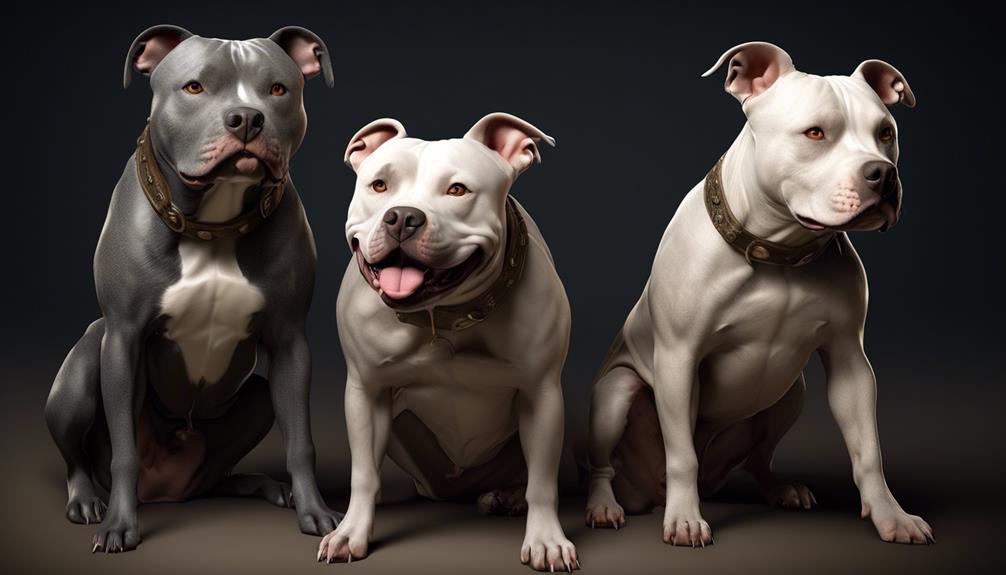
Pit Bulls, originally bred for bull-baiting, have evolved into versatile farm dogs and beloved nanny dogs, making them a unique and cherished breed. They originated in the United States and are medium-sized, with males weighing 35-60 pounds and females weighing 30-50 pounds. Pit Bulls have a short, smooth coat that comes in various colors.
This breed isn’t inherently aggressive, despite their reputation due to their history in fighting rings. They’ve an affectionate, loyal, playful, and intelligent temperament, which makes them great therapy dogs. Pit Bulls have been used in therapy for children with disabilities, providing comfort and emotional support.
They’ve also made appearances in popular culture, such as on the cover of Life Magazine and in movies and TV shows. Responsible adoption and breeding practices are important to ensure the well-being of this breed.
Adoption and Responsible Breeding
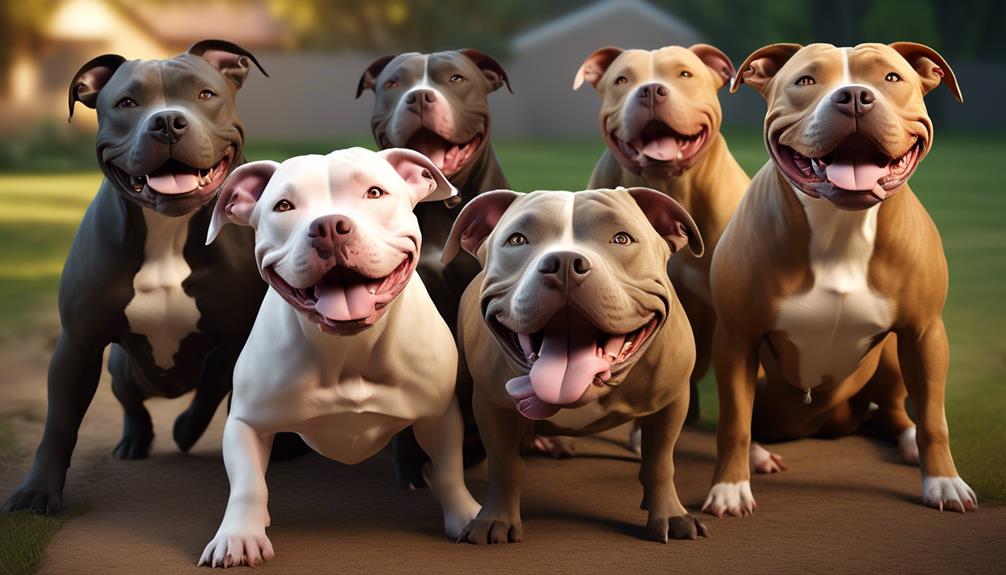
To ensure the well-being of Pit Bulls, it is important to prioritize adopting from rescue organizations or shelters and to choose a reputable breeder if purchasing. Rescue organizations and shelters often have an abundance of Pit Bulls in need of loving homes. By adopting from them, you not only save a life but also contribute to reducing overcrowding. If you decide to purchase a Pit Bull from a breeder, make sure to research and choose a reputable one. Reputable breeders prioritize the health and temperament of their dogs, ensuring that you bring home a well-adjusted and healthy companion. To help you understand the importance of adoption and responsible breeding, take a look at the table below:
| Adoption from Rescue Organizations or Shelters | Responsible Breeder |
|---|---|
| Saves a life and reduces overcrowding | Prioritizes health and temperament |
| Provides a loving home for a Pit Bull in need | Ensures well-adjusted and healthy dogs |
| Supports organizations dedicated to Pit Bull welfare | Responsible breeding practices |
| Offers an opportunity to give a second chance to a Pit Bull in need | Contributes to a positive breed reputation |
Therapy Dogs
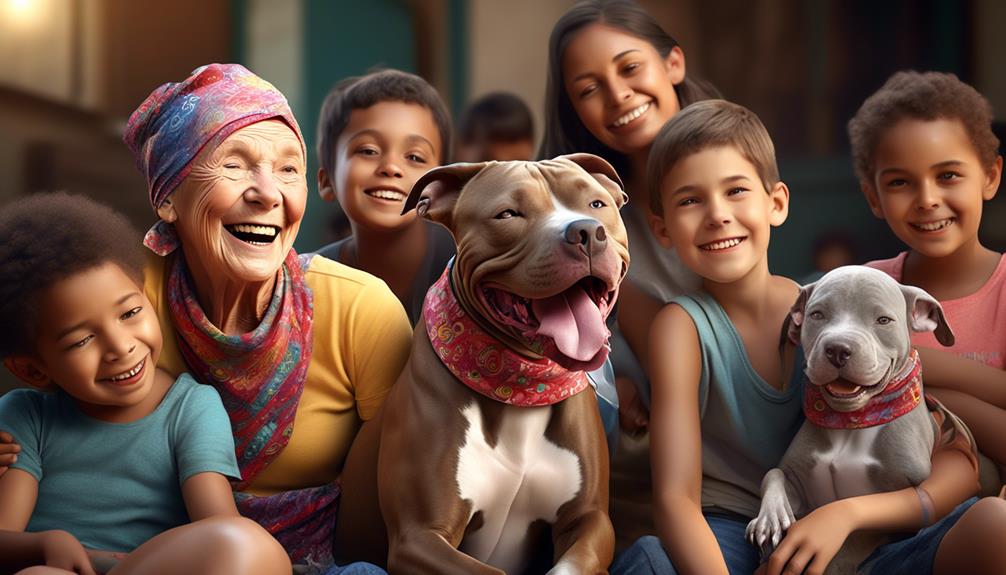
Pit Bulls’ affectionate nature, loyalty, and intelligence make them excellent candidates for therapy work. Their gentle and loving disposition allows them to provide comfort and emotional support to those in need.
Pit Bulls have been successfully utilized as therapy dogs, particularly for children with disabilities. Their ability to connect with people and their innate desire to please make them ideal for this important role. These dogs have the unique ability to sense and respond to human emotions, offering a sense of calm and companionship.
Pit Bulls’ adaptable nature allows them to excel in a variety of therapy settings, such as hospitals, nursing homes, and schools. Their presence brings joy and healing to those they encounter, challenging the misconceptions surrounding their breed.
Pit Bulls in Pop Culture

After exploring the therapeutic qualities of Pit Bulls, it’s time to shift our focus to their prominent presence in popular culture.
Pit Bulls have made appearances in various forms of media, solidifying their status in pop culture. They’ve graced the cover of Life Magazine three times, showcasing their iconic image to a wide audience.
In movies and TV shows like ‘Once Upon a Time in Hollywood’ and ‘Veronica Mars’, Pit Bulls have been featured, further increasing their visibility and representation.
Interestingly, the rapper Pitbull even chose his stage name based on the breed’s characteristics.
With their significant presence in popular culture, it becomes evident that Pit Bulls’ portrayal in media can greatly influence public perception and ultimately challenge breed discrimination.
Addressing Behavioral Concerns and Care
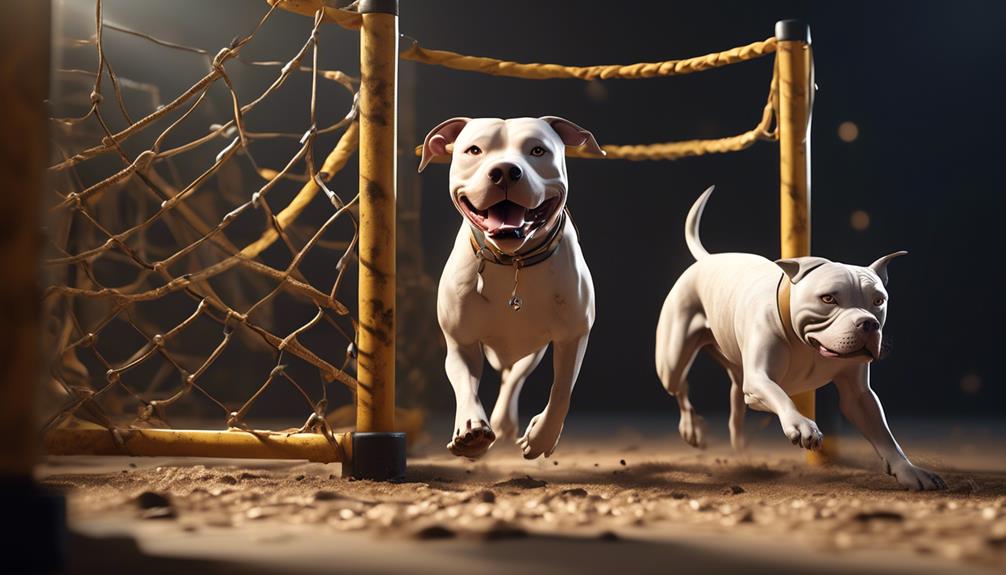
When addressing behavioral concerns and caring for Pit Bulls, it’s important to understand the difference between their prey drive and aggression.
Pit Bulls, like many other breeds, can have a high prey drive, which is an instinctual behavior that drives them to chase and capture prey-like objects. It’s crucial to keep dogs with a high prey drive leashed during outdoor activities and provide a fenced area to prevent them from wandering off or encountering dangerous animals.
It’s also important to note that aggression towards humans is often rooted in fear and anxiety, not prey drive. Proper training, socialization, and understanding the difference between prey drive and aggression can help manage these behavioral concerns and ensure the well-being of Pit Bulls.
Prey Drive and Training
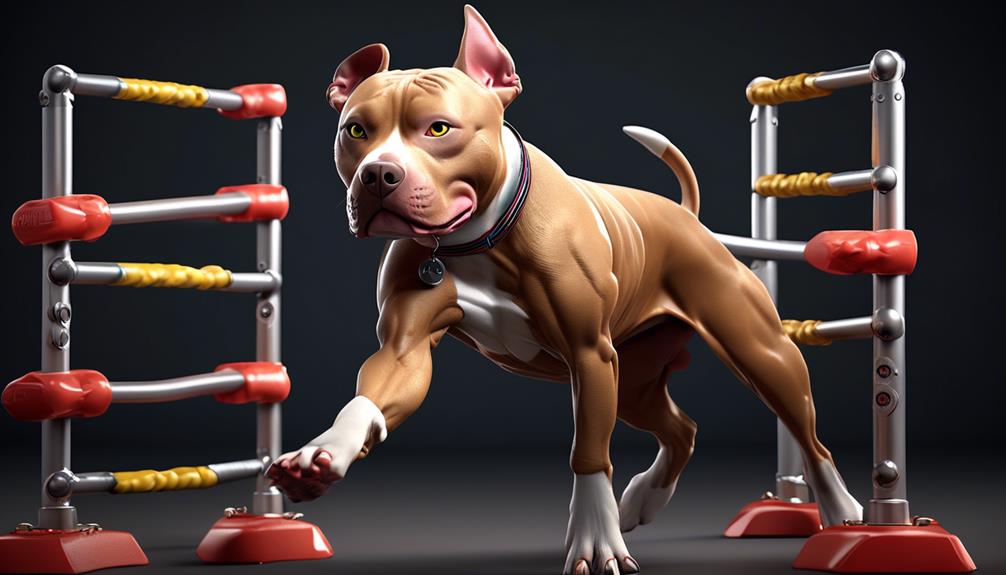
Understanding and managing prey drive is essential when training Pit Bulls. Prey drive refers to a dog’s instinct to chase and capture prey, such as small animals or moving objects. Pit Bulls, like many other breeds, have a natural prey drive that can be harnessed and controlled through proper training.
It’s important to channel this energy in a positive way and teach them appropriate behaviors. Start by gradually introducing them to different environments and stimuli, such as squirrels or toys, and reward them for calm behavior. Use positive reinforcement techniques, such as treats and praise, to reinforce desired behaviors and redirect their attention away from potential prey.
Consistency, patience, and a structured training plan are key to successfully managing and training a Pit Bull’s prey drive.
Exercise Needs and Lifestyle Considerations

To ensure the well-being of your Pit Bull and meet their exercise needs, it’s important to consider your lifestyle and activity level.
Pit Bulls are a versatile and active breed that require regular physical activity to stay happy and healthy.
If you have an active lifestyle and enjoy outdoor activities such as hiking, running, or playing fetch, a Pit Bull could be a great fit for you. They thrive on regular exercise and mental stimulation.
However, if you have a more sedentary lifestyle or limited time for exercise, a Pit Bull may not be the best choice for you. It’s essential to provide them with sufficient exercise to prevent boredom and potential behavioral issues.
What Makes Pit Bulls Versatile and Misunderstood as a Breed?
Pit bulls are often misunderstood due to negative stereotypes, but unveiling the akitapit breed reveals their true versatility. With proper training and socialization, these dogs excel in various roles, from therapy work to agility competitions. Their loyal and affectionate nature contradicts the unfair stigma surrounding them.
Conclusion
In conclusion, Pit Bulls are a versatile and misunderstood breed that has been unfairly stigmatized. Their history and characteristics show that they aren’t inherently aggressive, but rather affectionate, loyal, playful, and intelligent.
Pit Bulls have the potential to be therapy dogs and have made appearances in popular culture. By addressing common behavioral concerns and providing responsible care, we can challenge the stereotypes surrounding Pit Bulls and truly appreciate the true nature of this remarkable breed.




